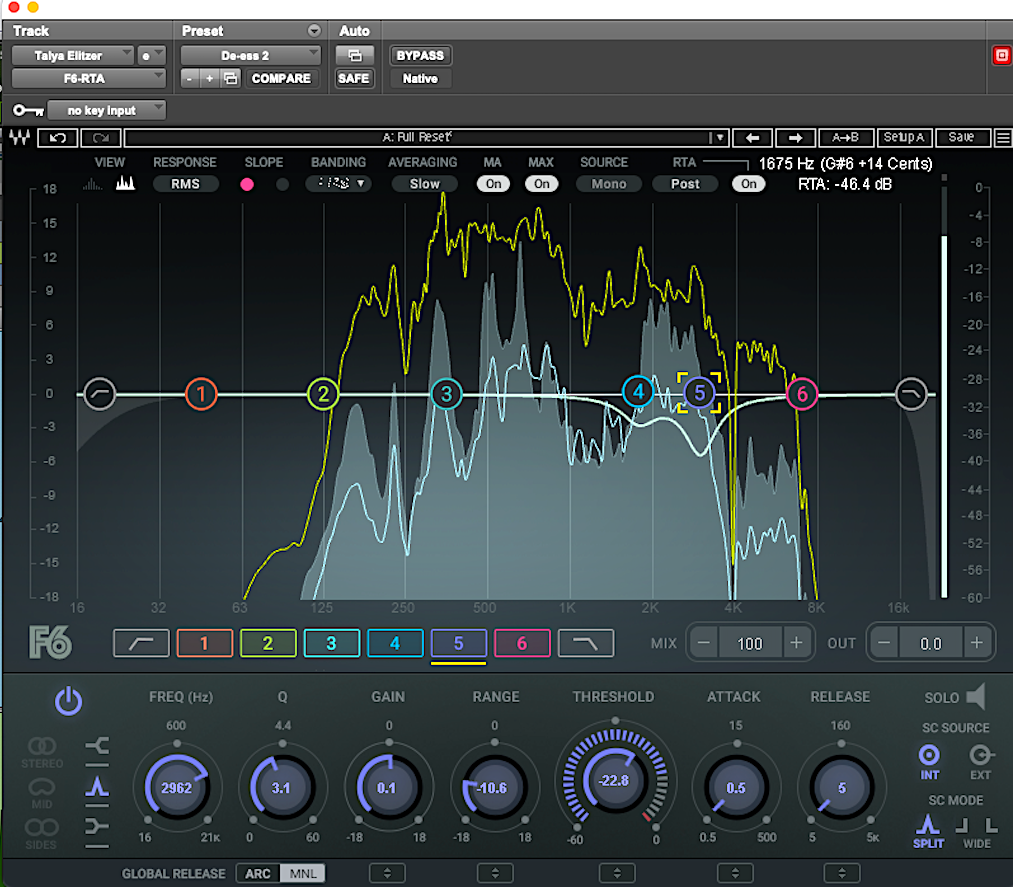- in Production by Bobby Owsinski
Why You Should Consider Using A Dynamic EQ As A De-Esser
Sibilance is something that every mixer has to deal with when it comes to vocal tracks. De-essers, the main processor used to defeat the problem, have been around since the early hardware days, but most are limited in what they are able to do in many situations because they only work on one frequency at a time. That’s why I’ve gone to a dynamic EQ to control sibilance, and it works like a charm.

What Is Sibilance?
Before we get into controlling sibilance, let’s take a look at what it is and where it comes from. Sibilance is the harsh sounds produced by certain consonants, mostly commonly lyrics with S, T and Z sounds. You might think of it as the opposite of a pop, where a pop is extreme dynamics in the low frequencies, for sibilance it’s in the high frequencies.
This usually occurs during recording when the vocalist is either too close to the mic, or the mic isn’t the the right one for the singer’s voice and emphasizes frequencies where the vocalist is strongest. Unfortunately, a pop filter doesn’t really help too much here, and when the vocal track is later compressed during mixing, the sibilance is even more emphasized than before.
Let’s Control It
As said previously, de-essers do a great job of controlling this noise but usually only work at one frequency. Sibilance shows up in more than one band most of the time though, so that means that you may end up using as many as 3 processors to gain control of the situation. There is a better way though – the dynamic EQ.
A dynamic EQ compresses the frequencies of a selected band. Most plugins have as many as 6 bands, but usually 3 are all you need for de-essing – around 1.5k to 3kHz, 4k to 6kHz, and 7kHz. These bands are approximate and are slightly different in every situation. The bottom line is to look in three places for the problem.
Using a dynamic EQ you’re not only able to process more than one sibilant frequency, but precisely dial in the right frequencies to diminish the sibilance and then dial in the right bandwidth as well. You’re using fewer plugins so you don’t take up as much processing power, and you have more control over the problem than with a normal de-esser.
My current favorite dynamic EQs for this task are the Waves F6 RTA and the FabFilter Pro-Q3, both which have the advantage of a frequency display that shows exactly where the problems lie. Pro tip – Set the Attack and Release controls as fast as they’ll go, then gradually adjust from there, for the best performance.
If you’re having trouble harnessing sibilance in your vocal tracks, it’s probably because it’s happening at more than one frequency. Try a dynamic EQ to get your arms around the problem. You’ll be glad you did.
You can read more from The Mixing Engineer’s Handbook and my other books on the excerpt section of bobbyowsinski.com.

